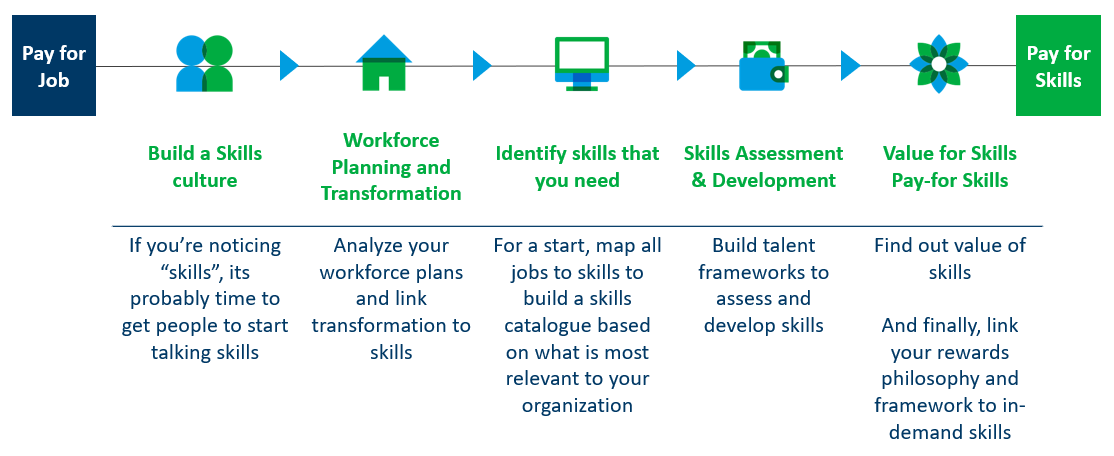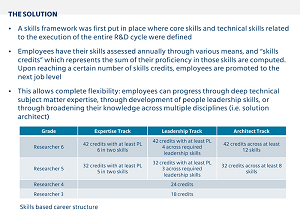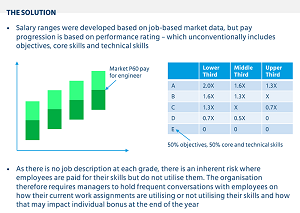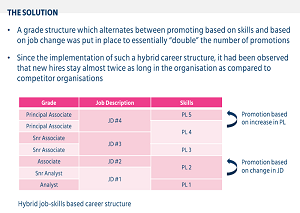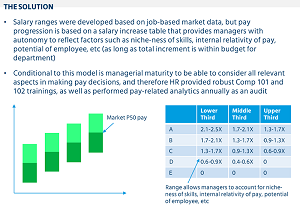According to Mercer’s Global Talent Trends report 2021, 63 percent of organizations in Singapore are investing to define future workforce needs and restructuring. The key for organizations is to identify the skills of the future, and then set about finding talent to fit those skills to future-proof themselves. This transformation is necessary not only to deploy the right talent but also to build a robust skills strategy that is essential for businesses in the future. The talent ecosystem is changing, and businesses must too.
But first, what is a ‘Skill’
At Mercer, we define ‘skills’ as individuals’ ability or honed knowledge to perform a particular task or assignment. This includes all core, leadership, technical observable behaviours.
Why are ‘Skills’ becoming so relevant?
The demand for new skills is evolving rapidly with the swift emergence of new technologies across business sectors. It is also the new currency to measure talent and ensure that organizations remain relevant in an ever-changing business landscape.
The World Economic Forum estimates that by 2025, 97 million new jobs will be created to fit the new type of work that will require an amalgamation of humans, machines, and algorithms. Additionally, about 50 percent of the global workforce will need some form of reskilling to remain relevant in the job market.
Keeping this in mind and the disruptions resulting from COVID-19, organizations are increasingly paying attention to workforce skills. Beyond ensuring that its talent and human capital upskills and reskills on a regular basis, companies are adopting a pay-for-skills approach to retain and train their workforce to become future-ready, as opposed to a pay-for-job approach.
What Is ‘Pay-for-skills’?
In a pay-for-skills approach, compensation is paid to employees based on their skills and related proficiencies that helps realize better results for the organization. The pay-for-job approach, on the other hand, pays employees based on the jobs they perform. The pay-for-job approach, popular until now, is becoming increasingly challenged as new technologies and changing consumer behaviours are demanding that organizations be agile and flexible in order to remain relevant.
Do Organizations Stand to Gain?
Organizations may ask themselves what they stand to gain from this shift – since it consumes both time and resources.
Today, going digital is imperative for businesses, but this process is imperfect if a business does not have the right people with the right skills. People with the right skills and tools can also help organizations realize higher productivity and greater cost efficiency. Moreover, a skilled workforce can result in better customer engagement, which in turn helps drive brand recognition and revenue.
The pay-for-skills approach is ideal for organisations where skills required for success are rapidly changing, and the organisations need a way to motivate employees to upskill and reskill. The underlying assumption here is of course that employees with different skill-levels performing the same job will result in highly differentiated outcomes.
The pay-for-skills approach can also be valuable for organizations that operate in an agile environment where job descriptions may be constantly changing. For such organizations, pay-for-skills is more appropriate as it provides a better reflection of an employee’s contribution to an organization than the traditional approach.
Challenges in the Uptake of Pay-for-Skills
Industries such as technology, financial services, and consumer goods have often led the way in attracting and retaining talent with in-demand skills. However, even these industries are now facing a cross industry impact of agile skills-based talent and rewards practices. Organizations switching to a skills-based journey can encounter several challenges. For line managers, it is about hiring the right skills based on their need and availability in the market. Meanwhile, for talent managers, it is the constant need to develop the right skills among their employees and to use skills as a currency to move employees across verticals where these skills are/will be needed. For rewards professionals, the challenge is to devise the right pay strategy for skills that are in demand at an organization.
Rewards managers, in particular, face several questions around the incorporation of skills into existing pay ranges or the annual salary/increment process. Will they have to completely abandon the job grade system or stop evaluating jobs? How will they know which skills demand higher pay? And most importantly, where should they begin?
Embarking on the Pay-for-Skills Journey
Once an organization is convinced of the benefits of having a skills-based talent practice, it can begin the shift from a pay-for-job to a pay-for-skills approach.

